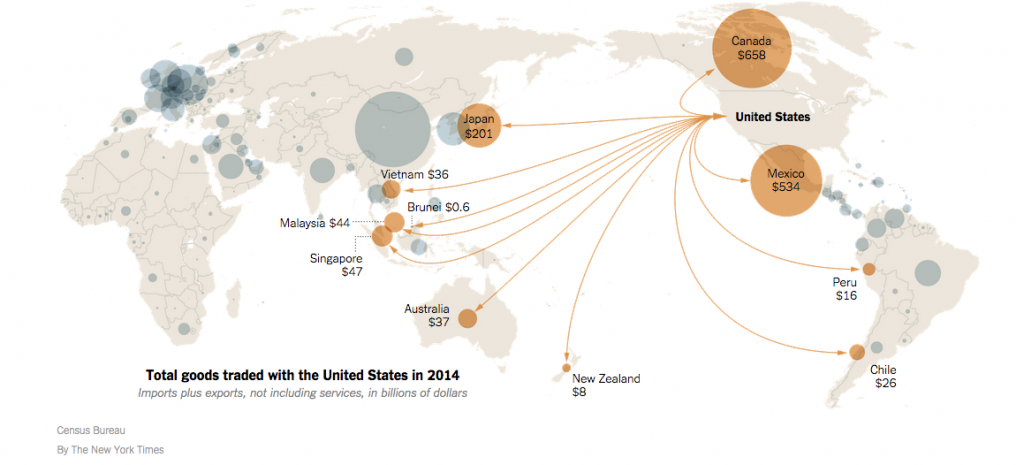As discussed by my colleague, Victor Pou, the Trans-Pacific Partnership is a definite win for Barak Obama and an important step by the United States to balance China’s increasing influence in the Pacific.

Chapter 20
It has taken 8 years to negotiate the deal and amongst its 30 chapters there is a specific and reportedly ambitious section on protecting the natural environment. According to the New York Times, this Chapter was agreed by the parties back in July when they were meeting in Hawaii and was a “bright spot” in what was a difficult moment for the agreement.
According to the TTP’s own website, the environmental chapter (# 20) increases environmental protection in a number of ways including:
- Ambitious commitments in combating trade in illegal wildlife and protecting fisheries, forests, and biodiversity
- Monitoring environmental commitments in existing trade agreements
- Reducing or eliminating tariffs on environmental friendly products and technologies such wind turbines
In the words of the agreement itself, the “TPP Parties share a strong commitment to protecting and conserving the environment, including by working together to address environmental challenges, such as pollution, illegal wildlife trafficking, illegal logging, illegal fishing, and protection of the marine environment”.
Full Transparency?
The agreement has encountered fierce resistance form Environmental groups such as the Sierra Club. The Sierra club is a particularly interesting group as it has morphed from a classically conservationists organization working to protect specific natural places to a much more activist organization such as Greenpeace which also oppose the deal.
The main argument, which is clearly expressed in the Sierra Club’s video is that the deal has been negotiated in secret and any comments on the environment are only for public relations and lack real enforcement mechanisms. Copies of the draft chapters of the agreement have been released by WikiLeaks and other organizations but I have not been able to read the full text of Chapter 20 so far.
All about China
A look at the parties to the agreement and their trade flows with the United States show clearly that its purpose is to balance Beijing’s growing influence and offer the nations on the pacific rim an alternative to China.
According to the World Trade Association, China topped the U.S. as the leading merchandise trader in 2013 and had imports form China and exports to it of $ 466 billion and $ 122 billion respectively.
From an environmental point of view, it is difficult to imagine how the agreement will have a significant impact if China itself does not join the pact or at least take on some kind of observer status.
On the issue of the illegal trade in endangered species, for example, China’s rising middle class is reportedly buying specific products due to their importance in traditional Chinese medicine and history has shown that such trade can only be stopped at the consumer side.
Who do you trust?
While I am sympathetic to the concerns expressed by The Sierra Club I do think they are wrong about Hydraulic Fracking and tend to believe President Obama when he talks about how far the agreement has gone to protect the environment and I will wait until I can read the final document before jumping to conclusions.
You can see Obama speaking to people at Nike in Portland below.

